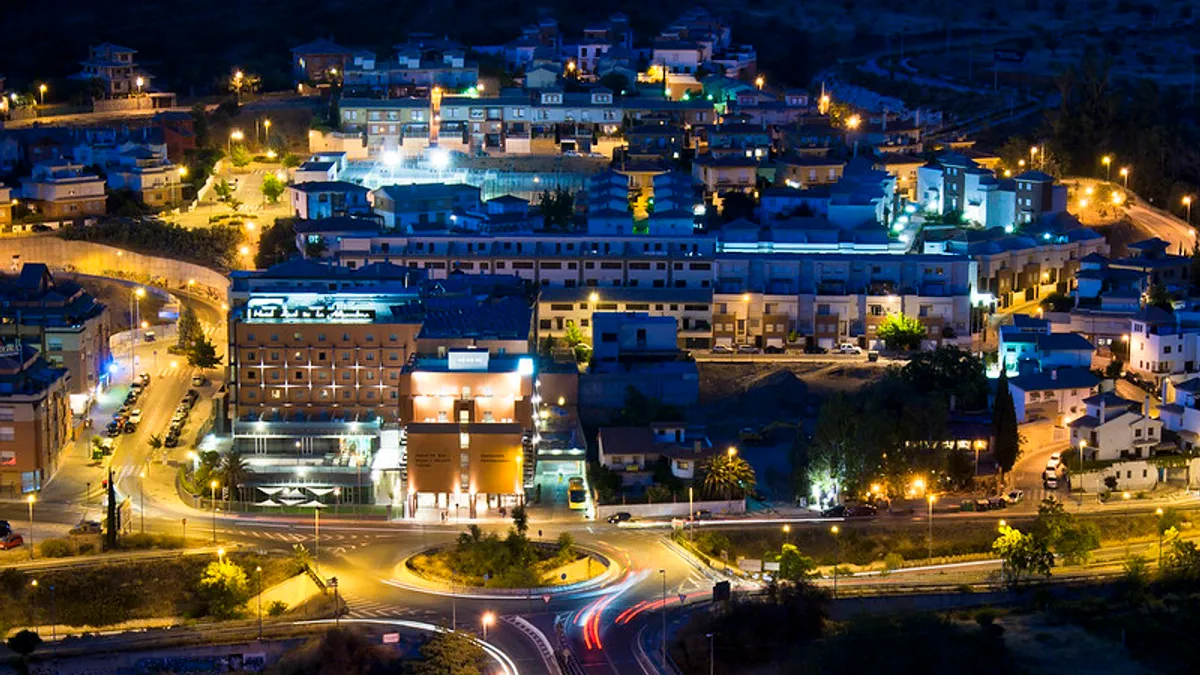Dive Brief:
- The global smart street lighting market is expected to see $28.1 billion in total investment over the next decade, according to a new market forecast published this week by infrastructure intelligence firm Northeast Group. This value includes investments in LED and smart lighting infrastructure and in related sensor investments.
- The study highlights opportunities in the coming decade for consolidation of the "extremely fragmented" vendor landscape, most of which is focused on software — a product expected to reach over $200 million in recurring revenue annually by 2029, Northeast Group reports.
- This forecast marks Northeast Group's sixth edition of the industry standard study, which analyzes the streetlight market across 125 countries. These countries are home to 326 million streetlights, 73% of which will have LED luminaires by the end of the decade, according to the study.
Dive Insight:
The smart streetlight vendor landscape — which the forecast calls "ripe for consolidation" — remains very fragmented both nationally and globally as several small players compete for a share of the emerging market, said Northeast Group Founder Ben Gardner in an email. From telecom operators to smart grid vendors, many smart city-adjacent market players are looking to streetlights as a canvas for innovation, according to the study.
Despite this abundance of vendors, the geographical breakdown of smart street lighting projects suggests such efforts are not yet widespread across the U.S. A map of notable project locations, shared in the Northeast Group study, shows heavy activity on the East Coast — and nearly none in the West.
"It is true that there has been more activity on the East Coast of the US, especially with large deployments of smart street lighting in the Southeast. This is due more to the ownership issue of streetlights rather than geography," said Gardner, noting large developments in Georgia and Florida driven by investor-owned utilities.
"In other parts of the country, it is the cities and municipalities that may own the streetlights and decide on deploying smart infrastructure. In fact, there are deployments in the Southwest and West Coast but they may be smaller and therefore are not captured in that specific graphic," Gardner continued, pointing to cities including Tucson, AZ and Los Angeles as locations with significant deployments.
In fact, Los Angeles was at the center of much streetlight hype this year with a first-of-its-kind design competition to find the city's new standard streetlight. The winner of that competition was a design called Superbloom, a "bouquet" concept with extra tubes and arms for features such as shade sails, pedestrian fixtures or solar panels. Earlier this year, Northeast Group said cities are "finally waking up" to the capabilities of smart streetlights.
Streetlight designs and offerings will continue to evolve, Gardner said, as the infrastructure becomes increasingly woven into the application of air quality monitoring, traffic control and other city operations. 5G technology will also be a factor in streetlight evolution as the installation of small cells influence "aesthetically pleasing" smart pole designs, he said.











